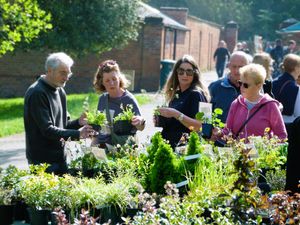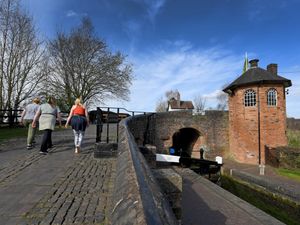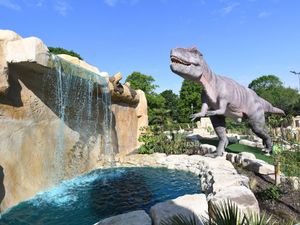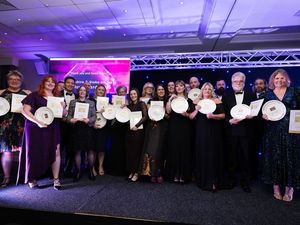Bantock Bodgers group members knit Express & Star piece for Wolverhampton Queen Street exhibition
“When I told people I was knitting the Express & Star, they thought I’d lost it...”
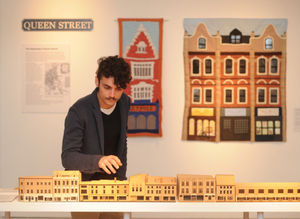
Hazel Thomas is speaking about the eye-catching piece of textile art she and friend Helen Page have created for the Queen Street exhibition which has just opened at Wolverhampton Art Gallery.
The pair are members of the Bantock Bodgers group whose vibrant interpretations of some of the street’s most historic buildings are real show-stoppers.
The spotlight has fallen on the street following a successful bid for Heritage Lottery funding by the city council to conserve, repair and restore some of its oldest and most handsome buildings.
The exhibition showcases the road, telling its history in words, craft pictures, sketches, models and collected stories, illustrating why it was singled out for conservation.
Hazel, aged 70, of Oxley, and Helen, 71, from Bilston, took six months to complete the Express & Star picture, which comes complete with landmark clock, a news seller and even pigeons.
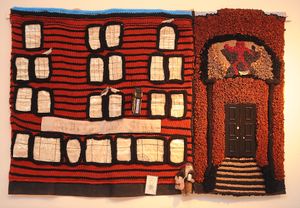
“We decided to create a pre-1930s version of the building and had help from Hazel’s husband David and my partner Steve and a friend Carolyn who made the non-textile parts,” said Helen.
Other pictures include a replica of the Congregational Church that used to stand on the corner of Queen Street and Market Street – where the Job Centre now stands – before it was demolished in 1971.
A hunt by gallery staff to find people who used to worship at the beautiful Victorian church almost almost half a century ago was successful with a handful of former congregation members attending Saturday’s opening – including a couple who married at the church in the 1950s.
Kay and Fred Hobbs, from Compton, had met and fallen in love at the Royal Hospital in Wolverhampton where they worked in research in the pathology laboratory.
Kay said: “It was a lovely church to get married in, not least because you could take wonderful group photographs on the steps outside so you could see everyone.
“There was a strong association with Tettenhall College and on Sundays their students would walk to the church and fill the gallery. Famous families, like the Manders and the Bantocks, went there and became deacons.
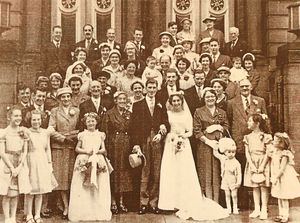
“But numbers declined as people moved out of the town centre. The church built daughter churches in villages like Wombourne, Swindon and Tettenhall Wood, so people went to those instead.”
Fred, himself a former deacon of the church, said: “It was very sad to see it go but the combination of an elderly congregation and the cost of maintaining the building meant it couldn’t survive.”
At the centre of the exhibition is a scale model of the street produced by first and second year students from the University of Wolverhampton’s School of Architecture and Built Environment.
The students have also completed a laser scan not only of the exterior of the street, but also a detailed internal scan of one of the street’s typical Georgian townhouses. It is planned to create 3D graphics to be incorporated into a Queen Street App due to be launched in September.
The show also includes a collection of paintings and illustrations of key buildings by the Black Country Urban Sketchers created mainly on a ‘sketchcrawl’ one snowy day in March and completed with the aid of photographs.
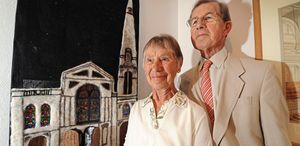
Queen Street Townscape heritage officer John Healey thanked guests at the exhibition launch for such a big turn-out.
He said other parts of the city had been considered for the project but that Queen Street was the finest in Wolverhampton ‘from an historical environment point of view’ .
“I’m not from Wolverhampton but I do think it’s the most fabulous place,” he said.
Progress had been made in distributing the building grants. “Hopefully, by next year, we will begin to see that progress emerging,” he added.

